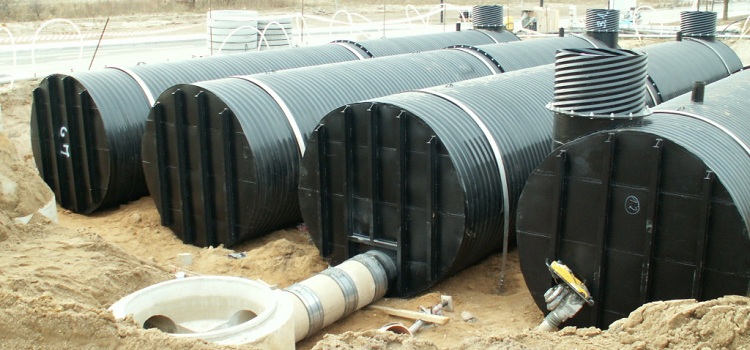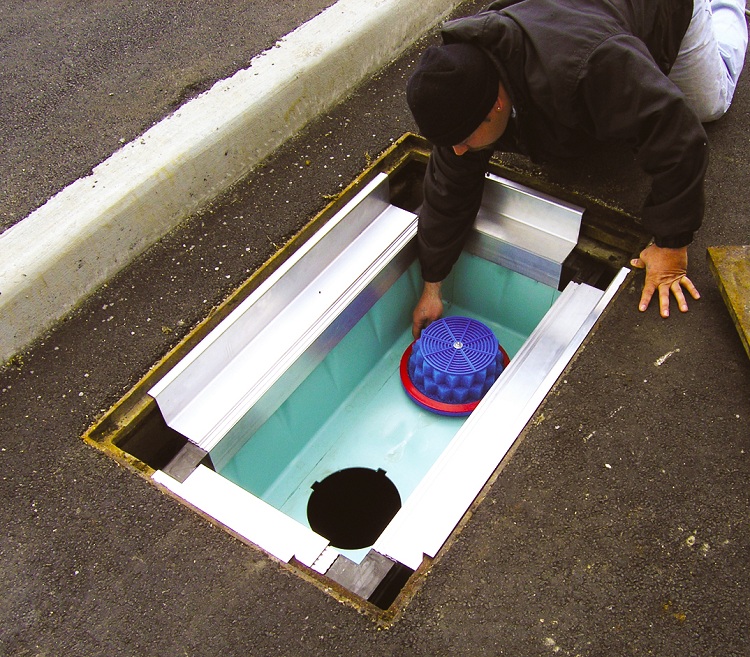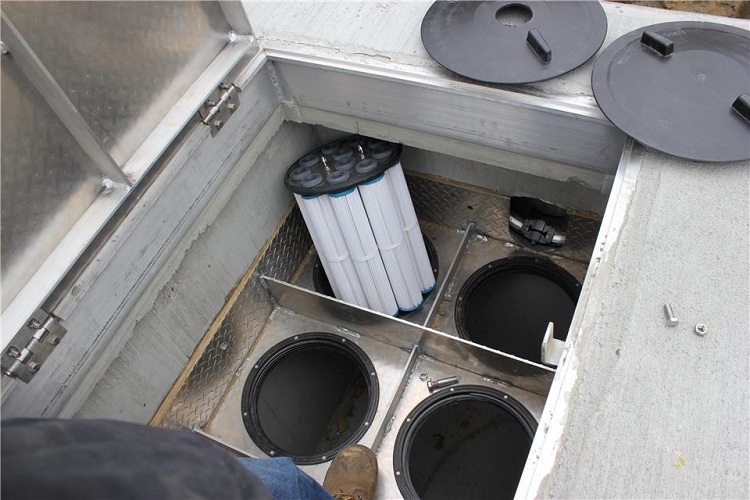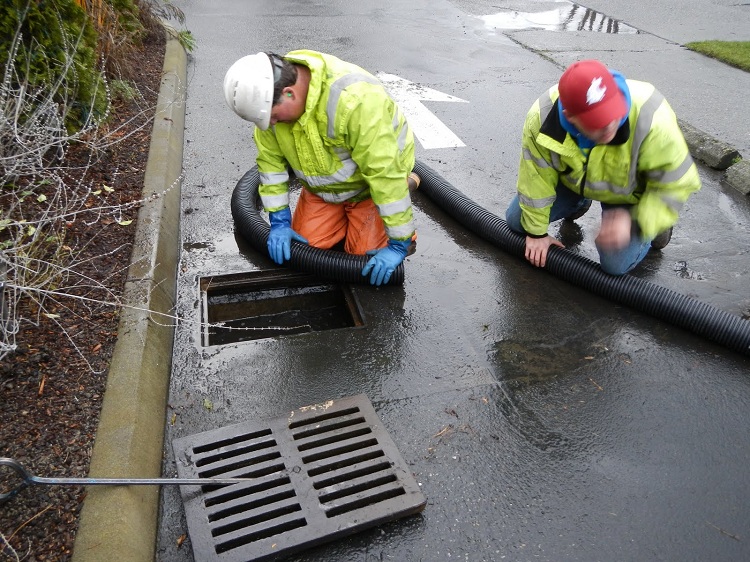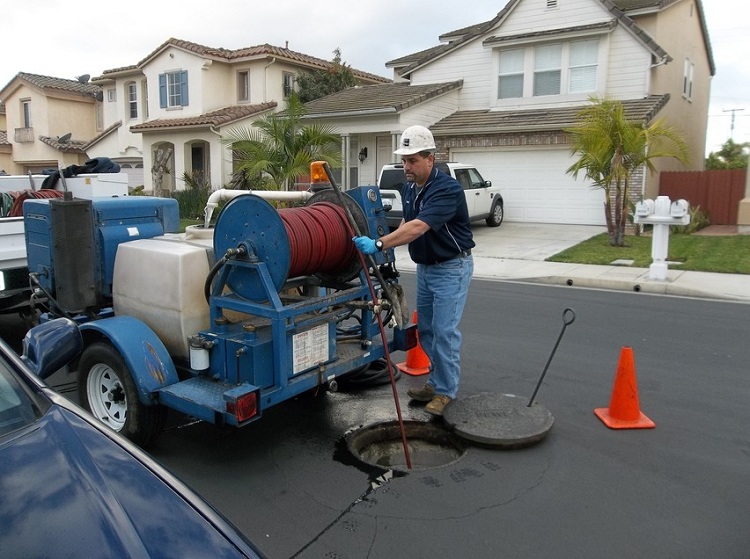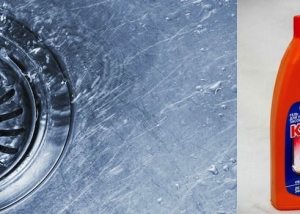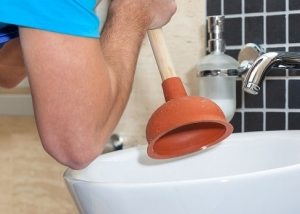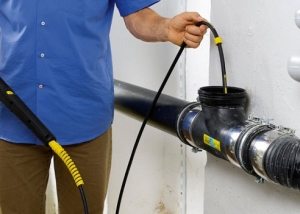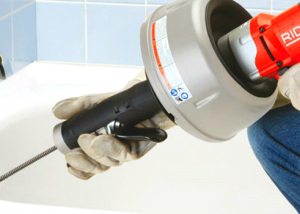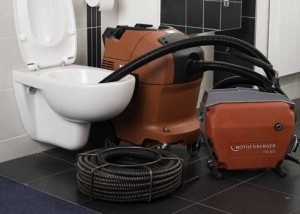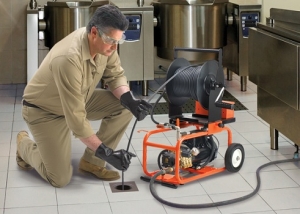Storm sewage is a design that provides favorable conditions for life on the site. It performs the function of collecting melt and rainwater and draining it outside the territory. During operation, various debris accumulates in this system (leaves, sand, stones, etc.). Accordingly, blockages are formed that reduce the operating characteristics of communication and there is a need to carry out such an event as cleaning the storm sewer.
Content
Features of storm sewers
Rainwater is not limited to simply collecting rainfall. Waste water must be disposed of, and before that it must be cleaned of harmful impurities. Sewage and wastewater treatment is carried out by any sewer network. The harmful impurities that are present in wastewater include:
- gasoline and engine oil;
- various chemicals that are sprinkled with roads in winter;
- various garbage that, one way or another, falls into the wastewater.
Note! These impurities are removed from the water thanks to the treatment facilities, which include various equipment. The treatment of storm sewage occurs in several stages.
If the system is not equipped with purification devices or does not cope with the tasks, it is possible clogging of the sewer system.
Components of a private sewage treatment plant
The treatment system, which is used for domestic purposes, has the following structural elements:
- special container for collecting fluid;
- sand trap;
- oil trap or oil trap;
- sorption device.
Fluid collection tank
This element of the sewage system is mated directly with storm sewers. Such a reservoir is designed to collect wastewater, which is formed as a result of heavy rainfall or melting snow.
A wastewater collection tank collects fluid. Of this capacity, moisture enters other parts of the structure, where stage-by-stage cleaning of storm drains takes place. The main function of this tank is to protect the cleaning elements of the system from overload.
Sand trap
This device is included in the first stage of cleaning. The sand trap performs a filtering function and separates large particles that are contained in wastewater. Such a part is indispensable, as it is capable of holding about 65% of the garbage that contains sewage water. When operating a sand trap, it must be remembered that it needs regular cleaning. Inspection of this equipment should be carried out at least once every 3 months, as well as immediately after a large amount of rainfall.
Oil trap or oil trap
Any treatment plant must be equipped with an oil trap or oil trap.Such equipment is designed to clean the sewage of storm sewers from oil wastes and oils. These substances pollute the soil, water and are released primarily from cars.
Wastewater treatment from oil products is carried out by filtration. After the impurities are filtered, they are coagulated (combined) into larger components. After coagulation, oily stains reach the surface and are removed using special equipment.
Sorption device
The sorption block is the last stage of purification from harmful impurities of wastewater. This device adsorbs small particles that have passed through the first stage of purification, and also collects residues of oil products and oils remaining in the water after the oil trap.
The sorption device is equipped with several filters that trap the smallest particles. These filters are subject to periodic replacement.
Methods for cleaning storm sewers from blockages
Often, blockages form in storm sewers. This is because the treatment equipment does not cope with its functions or fails. Regardless of the type of storm, blockage can occur in each system.
Depending on the design features and the type of blockage, there are several basic ways to eliminate them:
- mechanical;
- chemical;
- hydrodynamic;
- thermal.
Each of these options to eliminate blockage has its own characteristics.
Mechanical way
This method is used to clean the contaminated area of stormwater. As a rule, a special cable is used for this, which can have various configurations. At one end of the cable there is a special nozzle, due to which the blockage is destroyed. At the other end is a handle that you need to twist the cable. Consider the main stages of the cleaning of storm sewers using a mechanical method:
- First remove the protective grill.
- Then you need to twist the cable and immerse it in the sewer pipe,
- When you feel that you have reached the place where the blockage is localized, you need to start scrolling the handle of the cable.
Note! If the blockage is too strong, then you may have to repeat this procedure several times (periodically remove and rinse the cable nozzle).
In addition, you need to twist the cable in only one direction, otherwise there is a danger of damage to the sewer pipe or the device itself. The main function of the cable is to break the garbage stopper so that later it can be removed with a jet of water.
Chemical way
The chemical method is used less often than the mechanical one. This option is necessary in cases where the blockage has already hardened. Active chemical compounds are used to soften the cork. It is not recommended to carry out such cleaning yourself, as chemicals can cause harm to sewer pipes. For cleaning with chemicals, you need to hire people who are familiar with all the nuances.
The chemical cleaning process is conventionally divided into 2 stages:
- Active chemical compounds are fed into the system under high pressure.
- After that, the system is washed with clean water so that the reagents do not harm its components.
Consider the disadvantages of using this method:
- unpleasant odors and, as a rule, harmful substances are released during this event.
- shortens the operational life of the system;
- this method is harmful to the environment;
- professional services, maintenance of special equipment and reagent costs make this method quite expensive.
In order to not have to spend a tidy sum on cleaning storm sewers, it is necessary to systematically carry out preventive flushing of this design.
Hydrodynamic method
This method is the most popular and convenient option. Performing the hydrodynamic cleaning of a shower can be done by an ordinary person, however, various organizations also provide such services.
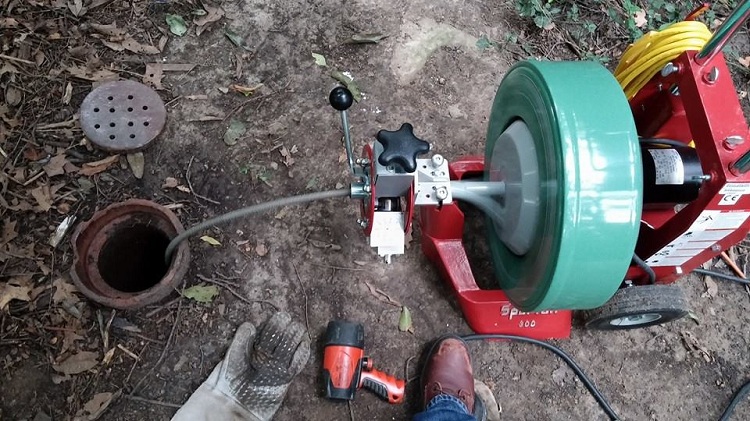
During hydrodynamic cleaning, water is supplied to the pipe under high pressure, due to which the cork from the garbage is destroyed
The principle of this method is as follows: water under high pressure is fed into the sewer. The blockage under water pressure is destroyed and pushed further. As a result, the debris from which the sewage thrombus formed is removed from the system. Within your area you can use household sewer cleaning device. Professionals use special equipment that can create a pressure of a liquid with a pressure of up to 120 atmospheres. This technique includes sludge pumps and canal washing units. Special equipment is used to clean long pipes. In addition, large diameter pipes are also cleaned with machines.
Cleaning a large storm sewer is a rather difficult task, which takes a lot of time. There are also several nuances that should be considered in order to perform large-scale cleaning:
- it is necessary to consider the location of the cleaning machines so that they do not interfere with the movement of cars;
- equip special equipment with flooring, if there is a danger of vehicles getting stuck in the soil;
- determine the source of water (for example, a hydrant);
- determine the place where the dirty water will merge.
Important! If the storm sewer has a diameter of not more than 200 mm, then it can be cleaned using car wash equipment. In domestic cases, an ordinary garden hose is often used.
For small blockages, hydrodynamic cleaning on both sides of the system is recommended.
Thermal method
This method differs from hydrodynamic only in water temperature. Flushing the system to remove blockage is carried out with a hot carrier. This method is usually used for severe blockages. Sometimes cleaning is carried out with steam, which is also a fairly effective method. The temperature of the water used for thermal cleaning is about 120 ° C. The technique for this method costs quite a lot of money, so it is not always possible to use it.
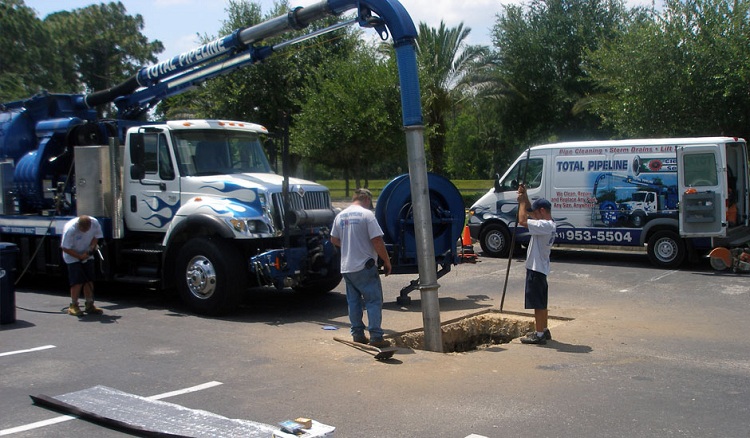
Large-diameter pipes are cleaned by the same hydrodynamic method, but already using the overall technique
Blockage prevention
There are a number of rules that must be followed in order to avoid clogging in storm sewers:
- the storm must be designed taking into account building codes and regulations (SNiP);
- it is not recommended to equip too long or curved sections;
- in places of branching, delta or turning of communication, it is necessary to install inspection wells;
- for arranging such communication, pipes with an internal smooth surface are best suited;
- pipes for storm sewers should have good corrosion resistance;
- preventive measures should be carried out regularly (cleaning chambers, gratings, garbage containers, etc.);
Steps for installing cleaning elements
Installation of treatment elements is carried out taking into account building codes and rules (SNiP) and is carried out in the following order:
- depending on the structural characteristics of storm sewer elements, it is necessary to dig trenches and pits suitable in size. This work can be done with your own hands or with the help of special equipment;
- if necessary - concreting the bottom of the pits. The result is a kind of foundation for future communication;
- in accordance with the project plan, purification devices are installed at pre-selected locations;
Note! It is imperative to install insulation and waterproofing materials on all elements of storm sewers.
- after the structure is installed and protected, backfilling of trenches and pits is carried out, with the elements laid in them.
Proper planning and arrangement of storm sewer communication, as well as systematic inspections and preventive cleaning, will prevent the occurrence of blockages and extend the life of the system as a whole.
